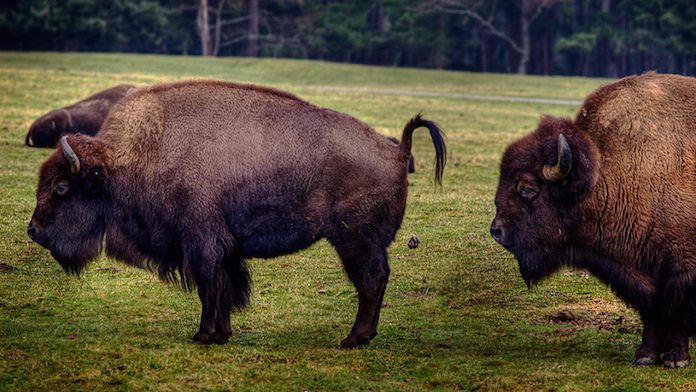The tree of life is divided into two major categories: eukaryotes including plants, mammals, and fungi, and prokaryotes including bacteria. Though there are several characteristics that distinguish eukaryotic cells from prokaryotic cells, the presence of mitochondria – a type of specialized sub-cellular compartment – has been widely accepted as a defining eukaryotic feature.
That is, until a study published in the journal Current Biology last week, describes a eukaryote with no discernible mitochondria at all.
The international collaboration, including Prof. Vladimir Hampl from Charles University in Prague, Prof. Anna Karnkowska from the University of Warsaw, Prof. Joel Dacks from the University of Alberta, and Prof. Andrew Roger from Dalhousie University, focused on a single-celled organism commonly found in the guts of small mammals, snakes, and insects: Monocercomonoides.
A gut feeling
It takes a truly committed scientist to stop and collect samples of bison stool while strolling through a National Park, but that’s exactly what Prof. Hampl and Prof. Karnkowska wanted to do while visiting Prof. Dacks at Elk Island National Park in Alberta.
Perhaps it’s no surprise then that they would be working with Monocercomonoides, a gut-dwelling microbe that would also be found in stool samples.
Monocercomonoides is particularly interesting because it was one of the least studied eukaryotic lineages that was proposed to lack mitochondria and several other eukaryotic features in the 1980’s. Over the years, all of the investigated lineages were found to contain at least some form of mitochondrial-like organelle. But no one had analyzed this particular group yet.
Dacks’ interest dates back to his Masters work on relatives of Monocercomonoides.
“I remember meeting Andrew Roger as graduate students at a conference,” recalls Dacks. “Someone suggested ‘we should sequence the genome of that thing’. We both kind of laughed. Given the sequencing technology at the time, that was like science fiction!”
On top of that, no one had yet been able to find a way of successfully growing Monocercomonoides or any of its group in the lab.
It wasn’t until a conference in Prague a few years later that Czech protistologists revealed that they had succeeded in doing exactly this. And a collaboration was born.
A beautiful example of the process of evolution
In humans mitochondria are most commonly associated with oxygen-dependent energy production, but they are also involved in many other cellular processes including calcium ion storage, synthesis of heme for oxygen transport in the blood, and production of iron-sulfur (Fe-S) clusters necessary for some protein functions. In fact, in those organisms where the mitochondria have been significantly down-graded, their remaining function was not energy production but rather Fe-S cluster formation.
Upon sequencing the genome of Monocercomonoides, Prof. Hampl and the team found no evidence of any proteins associated with mitochondrial function, including those for Fe-S cluster formation. Instead, the authors found that Monocercomonoides produces energy through anaerobic glycolysis – the process responsible for energy production during short, intense exercises in humans.
The authors were also surprised to find a set of genes for a different, mitochondria-independent Fe-S cluster synthesis mechanism normally found prokaryotes. These Fe-S cluster genes appear to have been acquired by Monocercomonoides by lateral gene transfer – the transfer of genes from a foreign source, in this case from bacteria. A closely related genus, Paratrimastix, also appears to have acquired these genes, yet still retains mitochondria.
The new Fe-S cluster system made the mitochondrial system redundant. And if there is a redundant system for something in an organism, there is always the possibility that future generations might lose it entirely.
“This is a great teaching example for evolution,” says Prof. Dacks. “Cells aren’t looking ahead to try and become something better; they’re just trying to survive.” And redundant systems are not necessary for survival.
The host with the most
A long-standing theory is that the mitochondrion arose as a prokaryotic cell that entered into a symbiotic relationship with a eukaryotic cell. Since the origin of that hypothesis, scientists have been trying to find a primitive eukaryotic species lacking mitochondria that could have been the original eukaryotic host.
Because Paratrimastix also acquired the prokaryotic Fe-S cluster system, yet still retains mitochondria, it seems unlikely that Monocercomonoides is the elusive original host species. Rather, it appears that their common ancestor had mitochondria and acquired the Fe-S genes, followed by mitochondrial loss in some off-shoots due to redundancy.
“It will be interesting to see whether losses have also occurred in any other lineages. Now that we know it is possible, there is all the more reason to explore,” says Dacks.








































